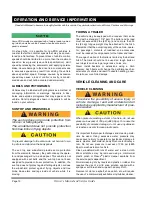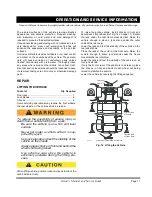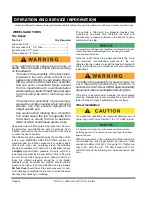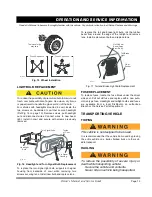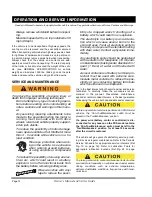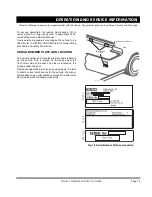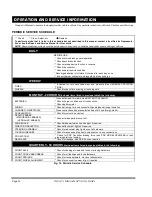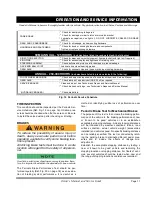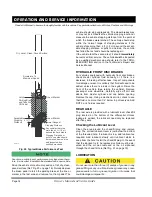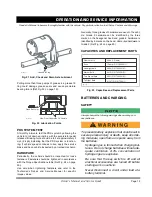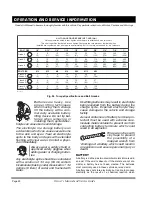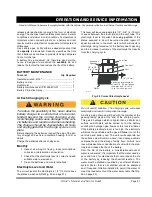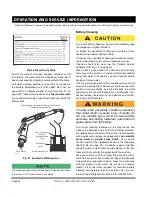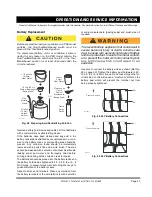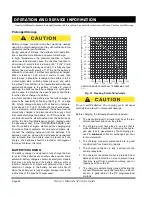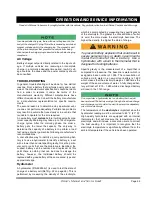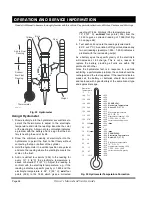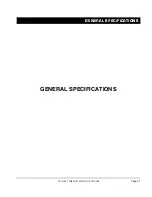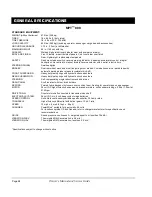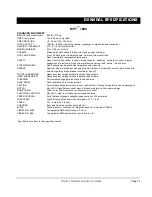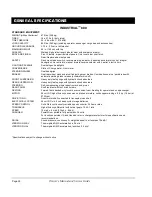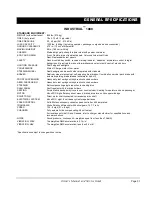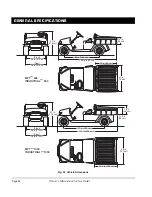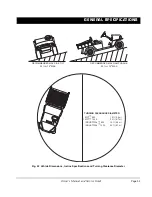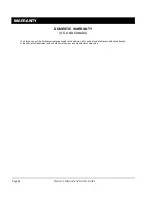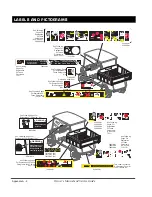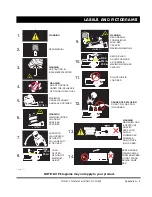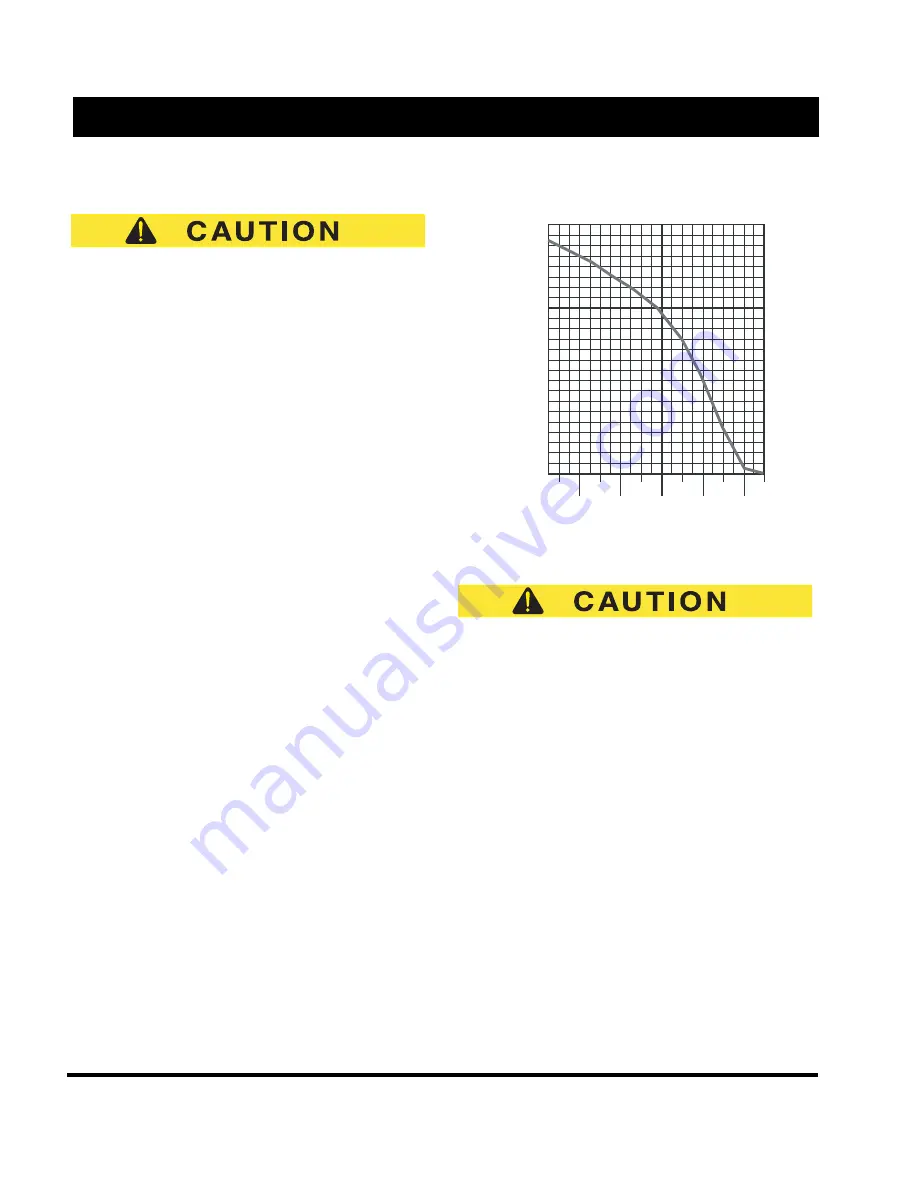
OPERATION AND SERVICE INFORMATION
Page 24
Owner’s Manual and Service Guide
Read all of Manual to become thoroughly familiar with this vehicle. Pay particular attention to all Notes, Cautions and Warnings
Prolonged Storage
Battery charger, controller and other electronic devices
need to be disconnected since they will contribute to the
premature discharge of batteries.
During periods of storage, the batteries will need atten-
tion to keep them maintained and prevent discharge.
In high temperatures the chemical reaction is faster,
while low temperatures cause the chemical reaction to
slow down. A vehicle that is stored at 90° F (32° C) will
lose.002 of specific gravity each day. If a fully charged
battery has a specific gravity of 1.275, and the battery is
allowed to sit unused, it will become partially discharged.
When it reaches 1.240, which it will do in less than
twenty days, it should be recharged. If a battery is left in
a discharged state, sulfating takes place on and within
the plates. This condition is not reversible and will cause
permanent damage to the battery. In order to prevent
damage, the battery should be recharged. A hydrometer
can be used to determine the specific gravity and there-
fore the state of charge of a battery.
In winter conditions, the battery must be fully charged to
prevent the possibility of freezing (Ref Fig. 31 on page
24). A fully charged battery will not freeze in tempera-
tures above -75° F (-60° C). Although the chemical reac-
tion is slowed in cold temperatures, the battery must be
stored fully charged, and disconnected from any circuit
that could discharge the battery. For PDS vehicles, the
controller should be disconnected from the batteries by
setting the Run-Tow/Maintenance switch, located under
the passenger seat, to the ‘TOW/MAINTENANCE’ posi-
tion. For portable chargers, disconnect the charging plug
from the vehicle receptacle. For on-board chargers, dis-
connect the charging harness from the batteries. The
batteries must be cleaned and all deposits neutralized
and removed from the battery case to prevent self dis-
charge. The batteries should be tested or recharged at
thirty day minimum intervals.
BATTERY CHARGING
The
battery charger is designed to fully charge the bat-
tery set. If the batteries are severely deep cycled, some
automatic battery chargers contain an electronic module
that may not activate and the battery charger will not
function. Automatic chargers will determine the correct
duration of charge to the battery set and will shut off
when the battery set is fully charged. Always refer to the
instructions of the specific charger used.
Fig. 31 Freezing Point of Electrolyte
Do not overfill batteries. The charging cycle will expel
electrolyte and result in component damage.
Before charging, the following should be observed:
•
The electrolyte level in all cells must be at the rec-
ommended level and cover the plates.
•
The charging must take place in an area that is
well ventilated and capable of removing the hydro-
gen gas that is generated by the charging pro-
cess. A
minimum
of five air exchanges per hour
is recommended.
•
The charging connector components are in good
condition and free from dirt or debris.
•
The charger connector is fully inserted into the
vehicle receptacle.
•
The charger connector/cord set is protected from
damage and is located in an area to prevent injury
that may result from personnel running over or
tripping over the cord set.
•
The charger is automatically turned off during the
connect/disconnect cycle and therefore no electri-
cal arc is generated at the DC plug/receptacle
contacts.
1.100
1.120 1.160
1.200 1.240
1.280
1.140
1.180
1.220
1.260 1.300
-9
-15
-21
-26
-32
-37
-43
-48
-54
-60
-65
-71
E
L
E
C
T
R
O
L
Y
T
E
T
E
M
P
E
R
A
T
U
R
E
SPECIFIC GRAVITY ELECTROLYTE FREEZING POINT
O
C
+15
+5
-5
-15
-25
-35
-45
-55
-65
-75
-85
-95
O
F
Ref Fpe 1
Summary of Contents for INDUSTRIAL 1000 2007
Page 8: ...Page vi Owner s Manual and Service Guide TABLE OF CONTENTS Notes ...
Page 12: ...Owner s Manual and Service Guide Notes Page x SAFETY INFORMATION ...
Page 18: ...Owner s Manual and Service Guide Page xvi SAFETY INFORMATION Notes ...
Page 22: ...Owner s Manual and Service Guide Page xx SAFETY INFORMATION Notes ...
Page 49: ...Page 27 GENERAL SPECIFICATIONS Owner s Manual and Service Guide GENERAL SPECIFICATIONS ...
Page 56: ...Page 34 Owner s Manual and Service Guide GENERAL SPECIFICATIONS Notes ...
Page 57: ...Page 35 Owner s Manual and Service Guide WARRANTY LIMITED WARRANTIES ...
Page 59: ...Appendix A 1 Owner s Manual and Service Guide LABELS AND PICTOGRAMS LABELS AND PICTOGRAMS ...
Page 76: ...Sivu vi Käyttö ja huolto ohje SISÄLLYSLUETTELO ...
Page 80: ...Käyttö ja huolto ohje TURVALLISUUSOHJEITA Sivu x Muistiinpanoja ...
Page 86: ...Käyttö ja huolto ohje Sivu xvi TURVALLISUUSOHJEITA Muistiinpanoja ...
Page 90: ...TURVALLISUUSOHJEITA Sivu xx Käyttö ja huolto ohje Muistiinpanoja ...
Page 117: ...Sivu 27 GTEKNISET TIEDOT Käyttö ja huolto ohje TEKNISET TIEDOT ...
Page 124: ...Sivu 34 Käyttö ja huolto ohje TEKNISET TIEDOT Muistiinpanoja ...
Page 125: ...Sivu 35 Käyttö ja huolto ohje TAKUU RAJOITETTU TAKUU ...
Page 127: ...Liite A 1 KILVET JA KUVAT Käyttö ja huolto ohje KILVET JA KUVAT ...
Page 133: ...Liite B 1 Käyttö ja huolto ohje YHDENMUKAISUUSJULISTUS YHDENMUKAISUUSJULISTUS VAIN EUROOPPA ...

